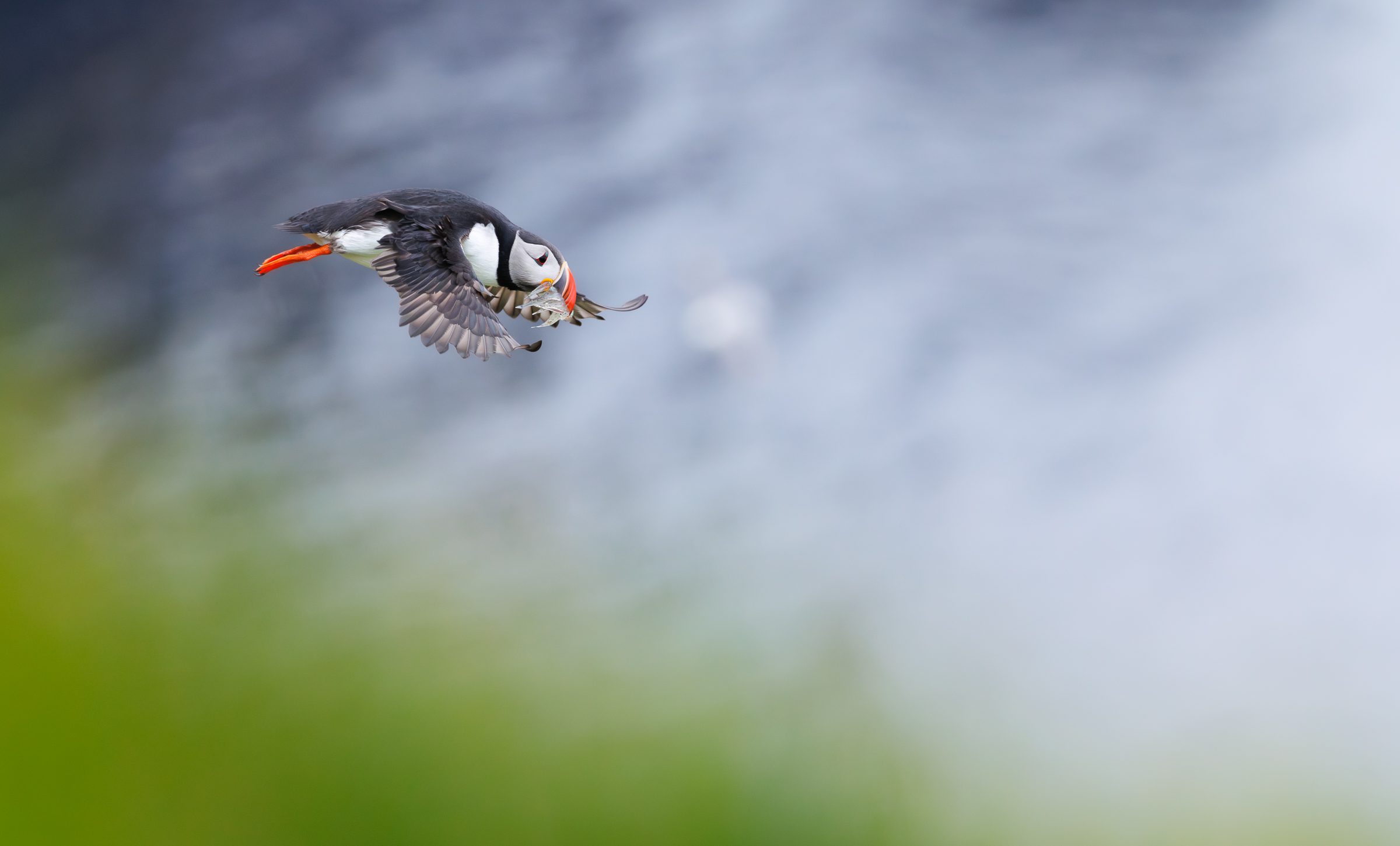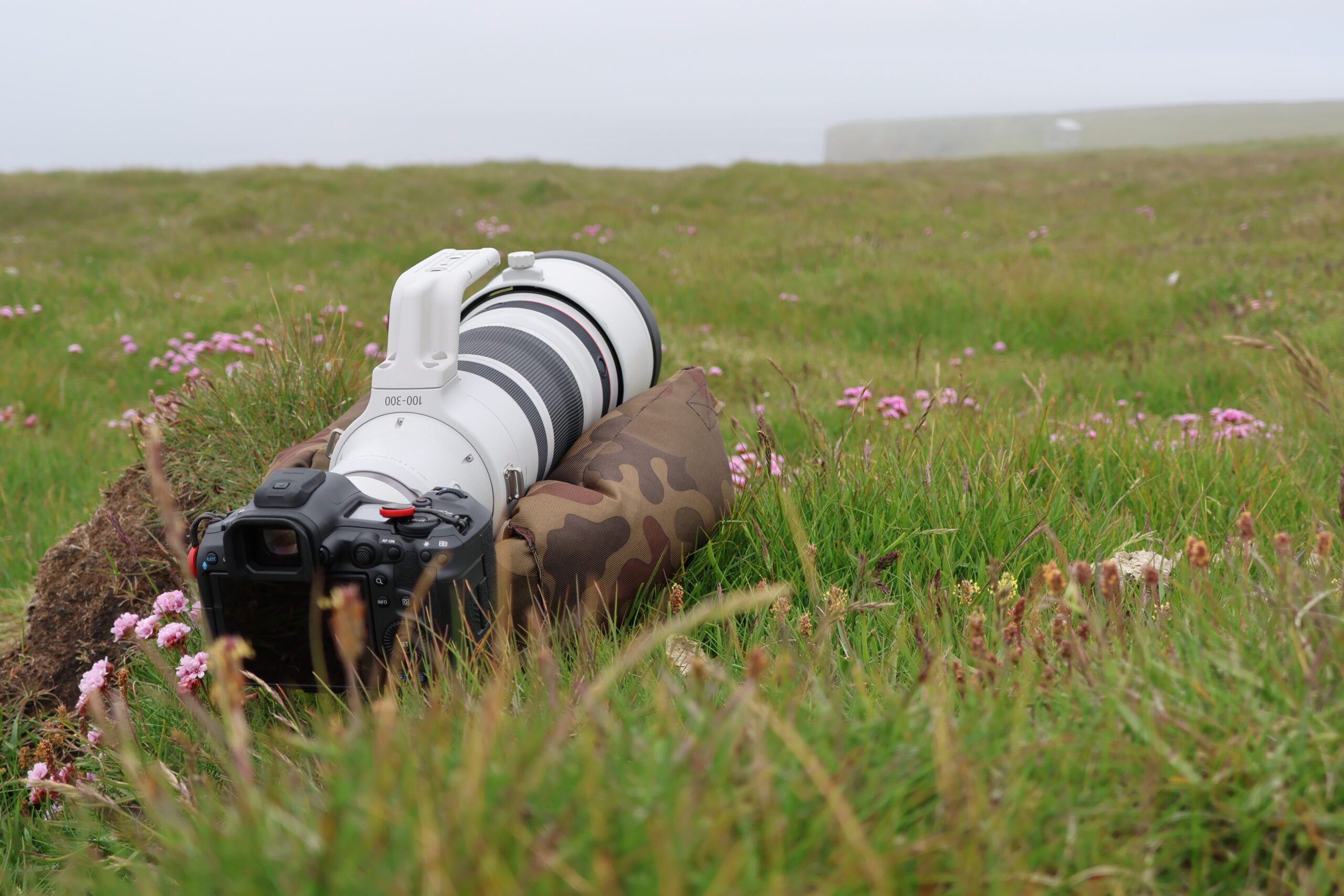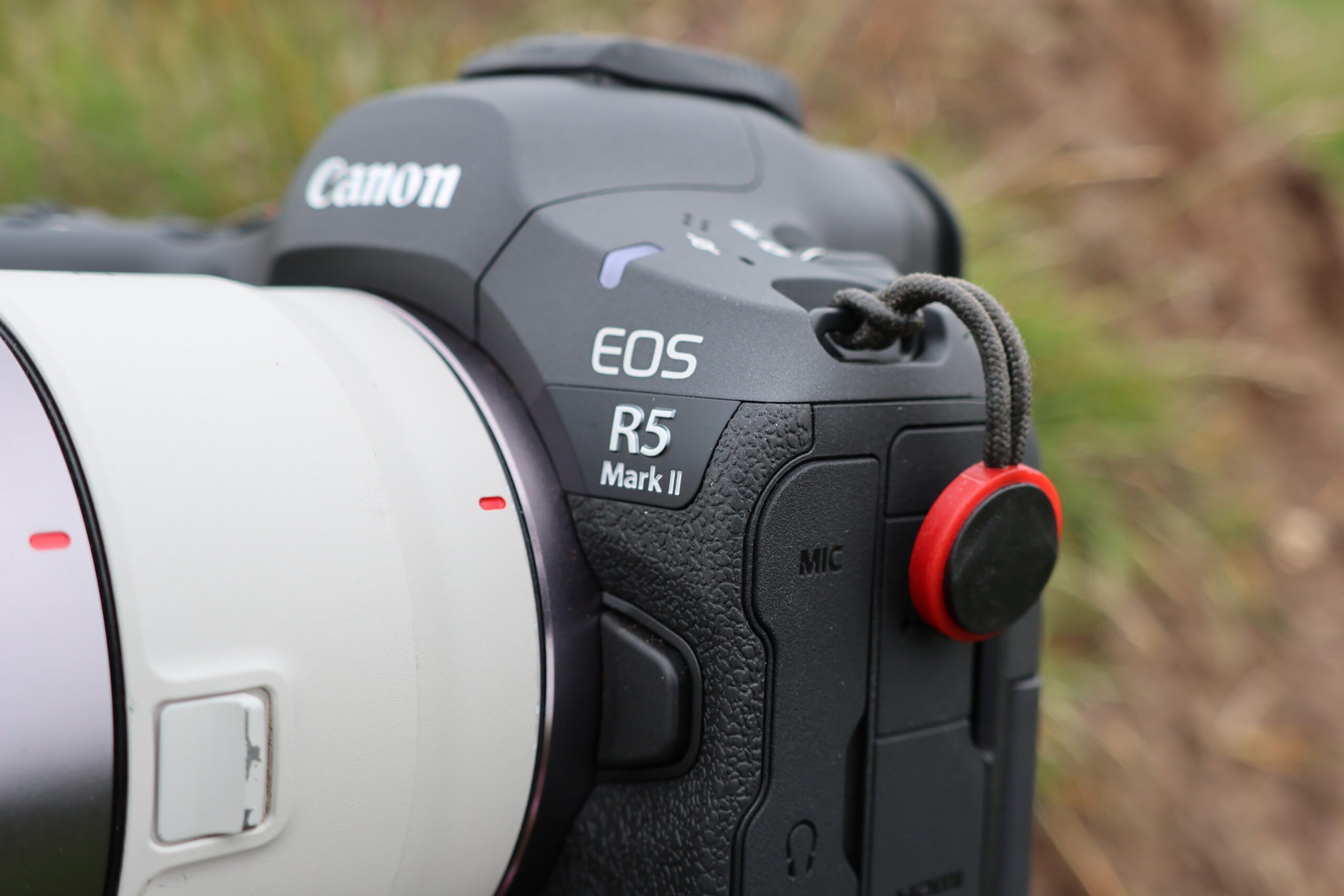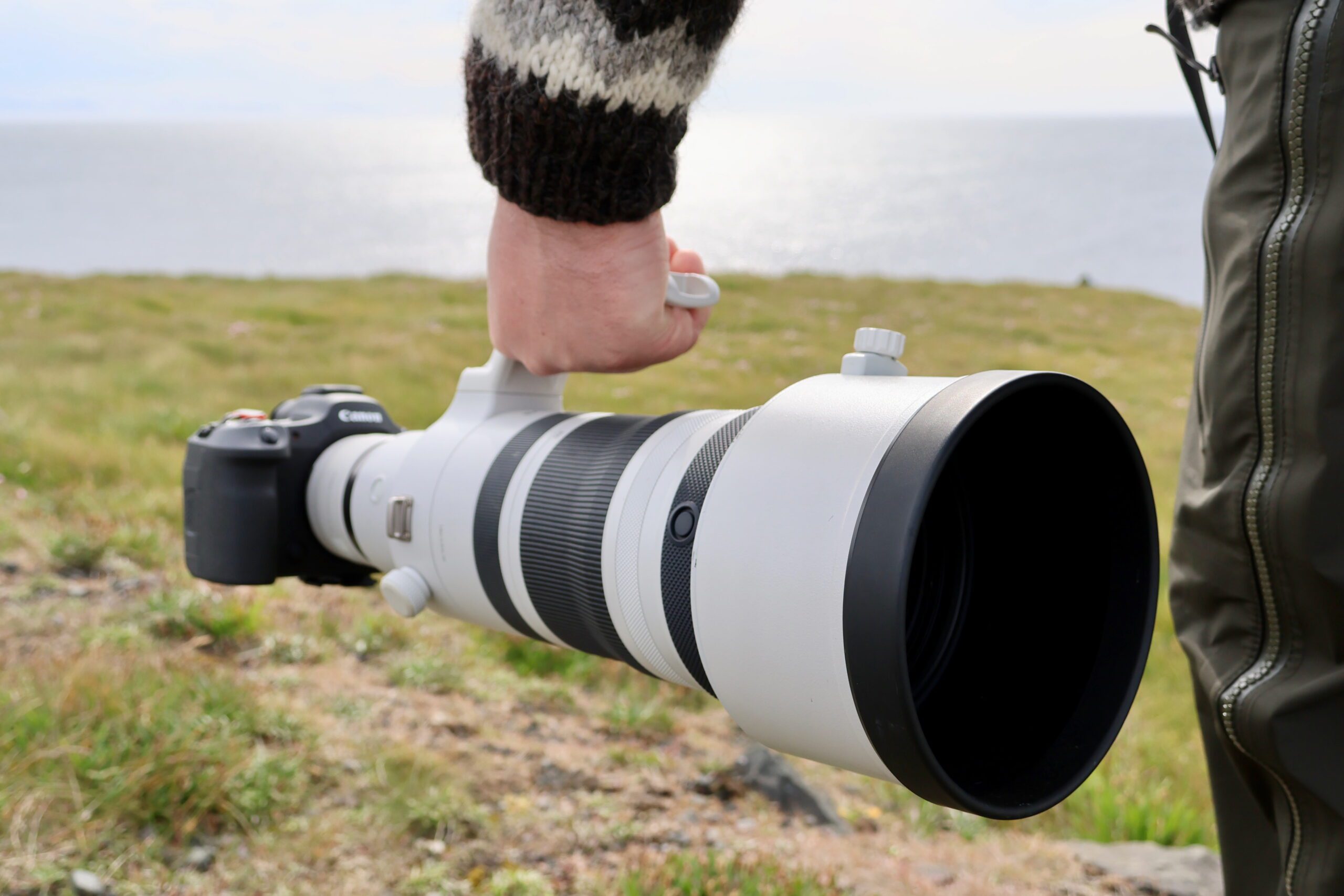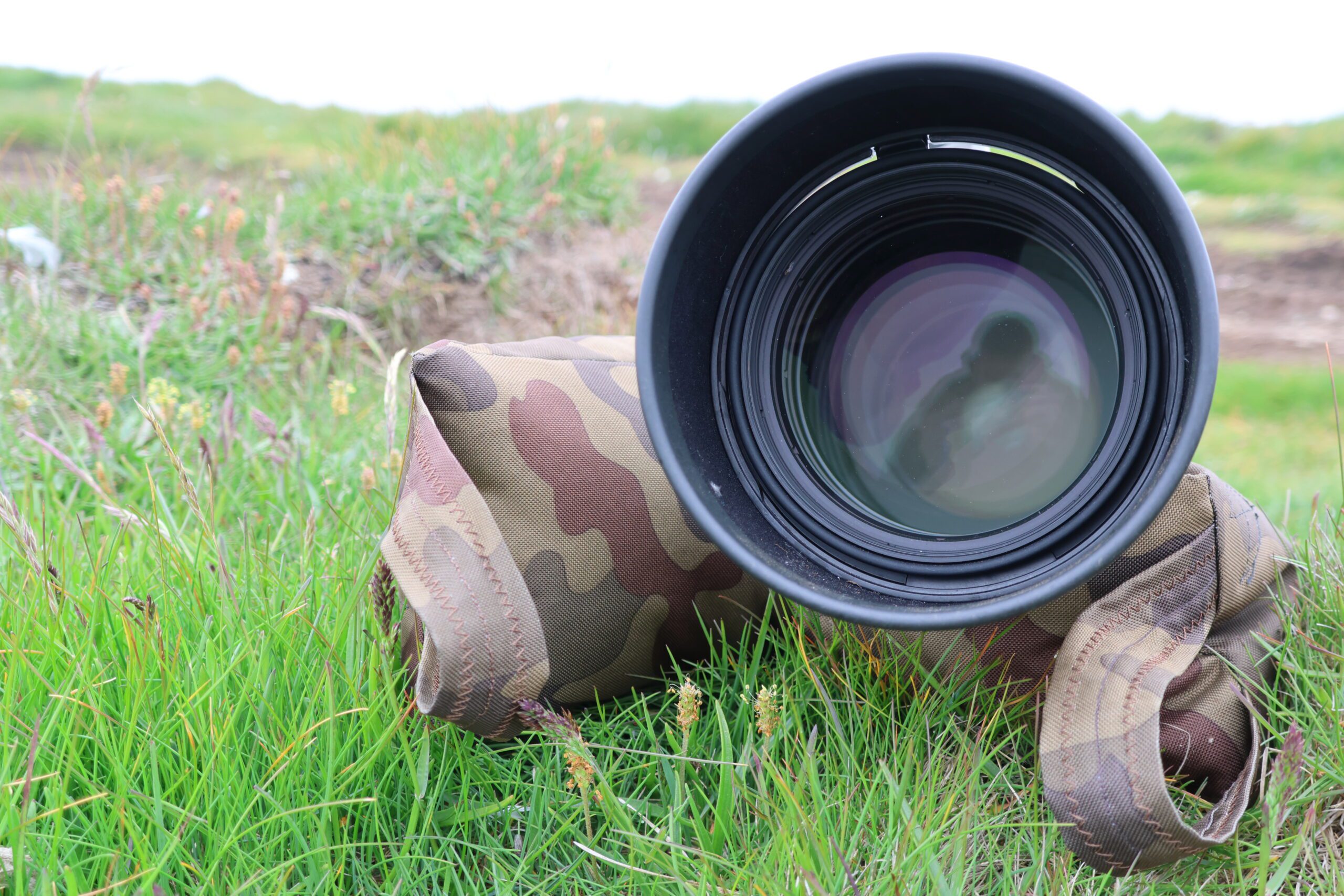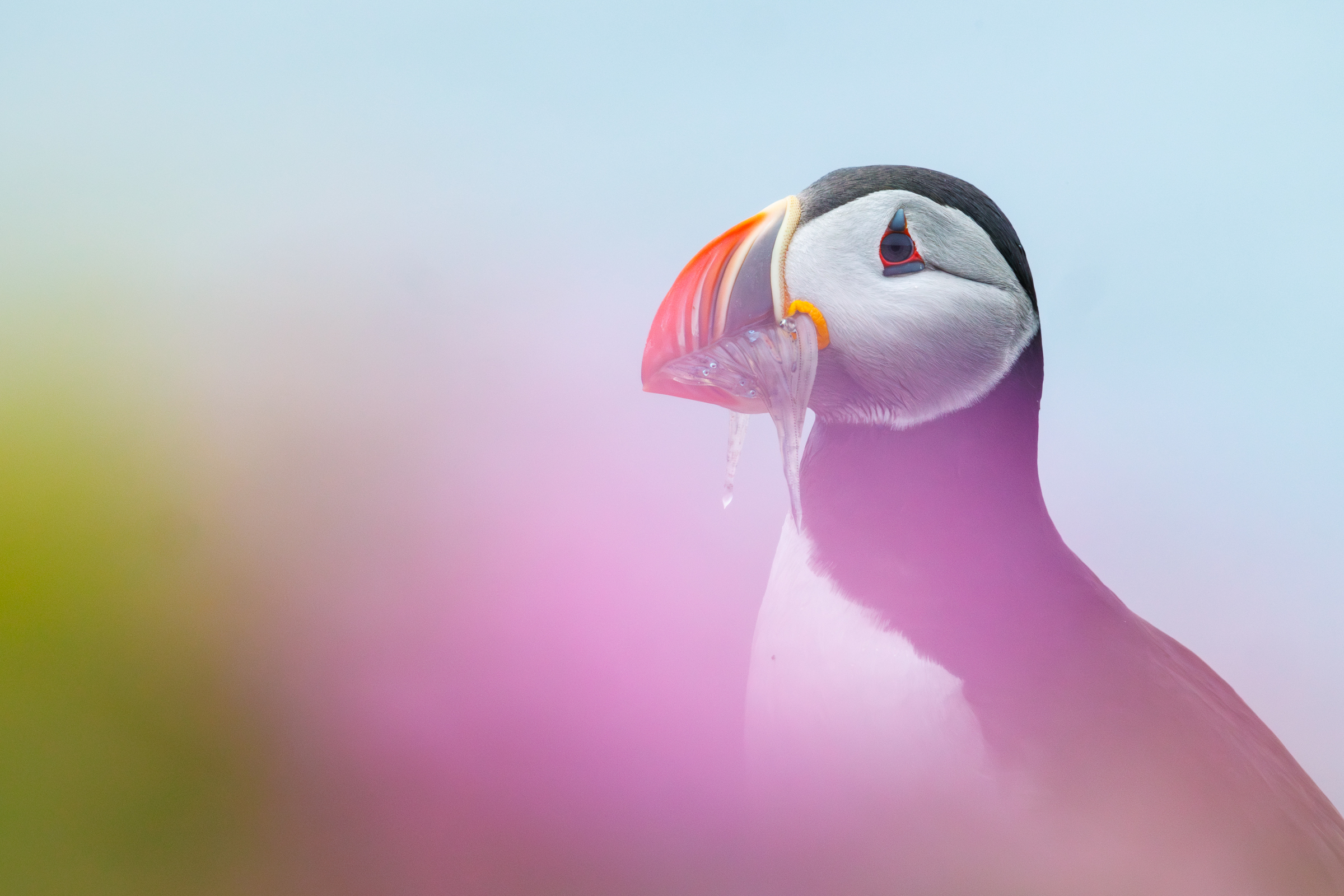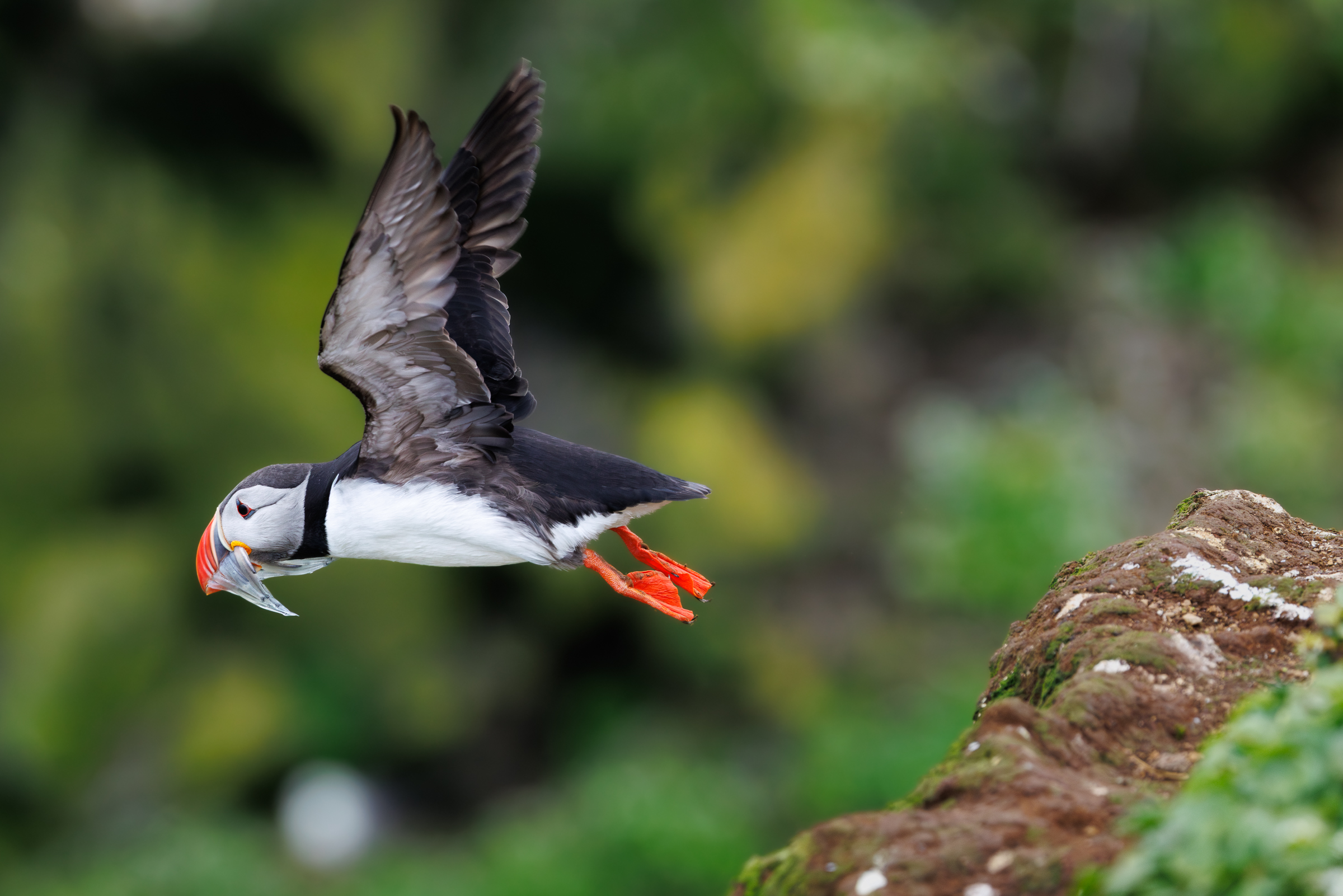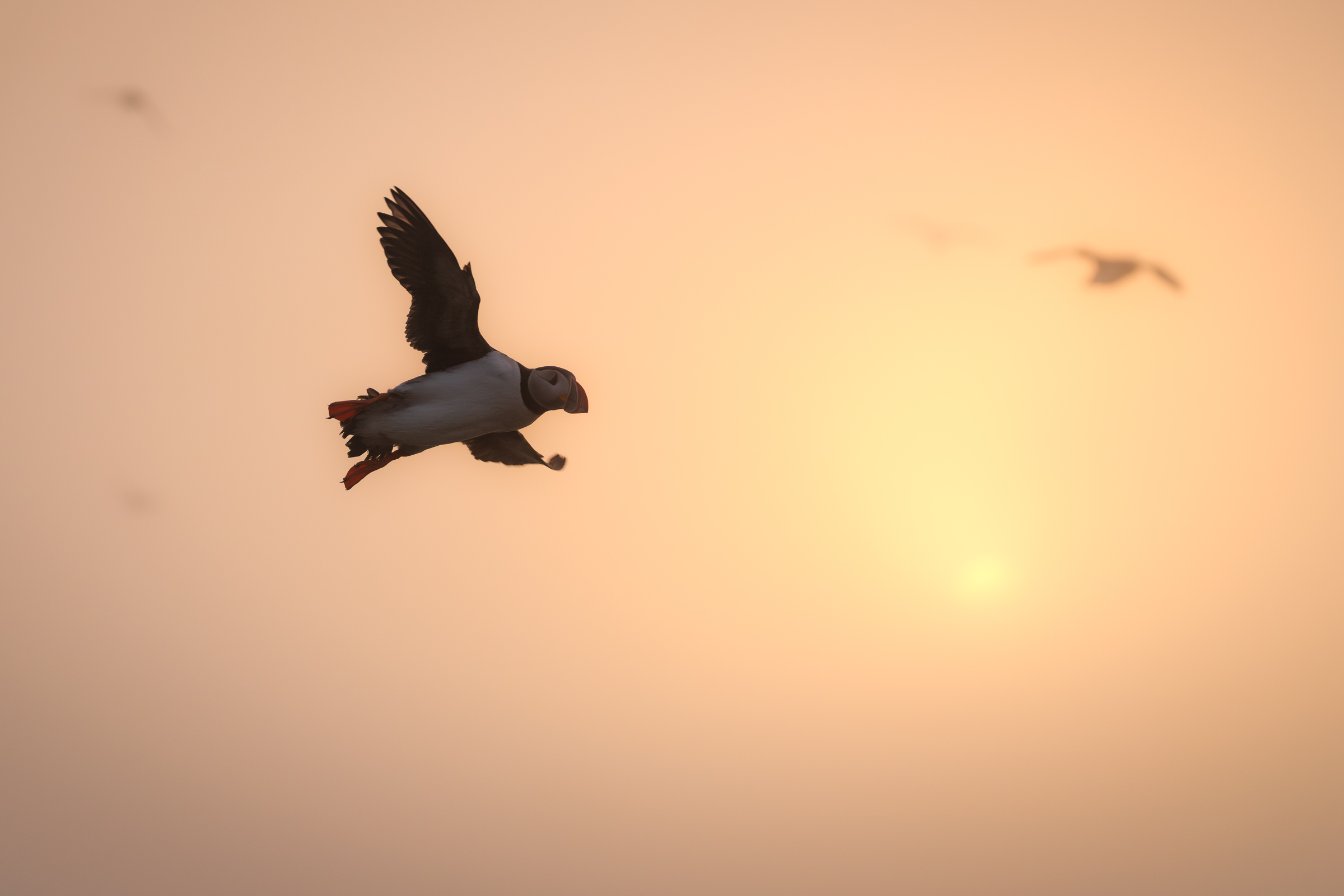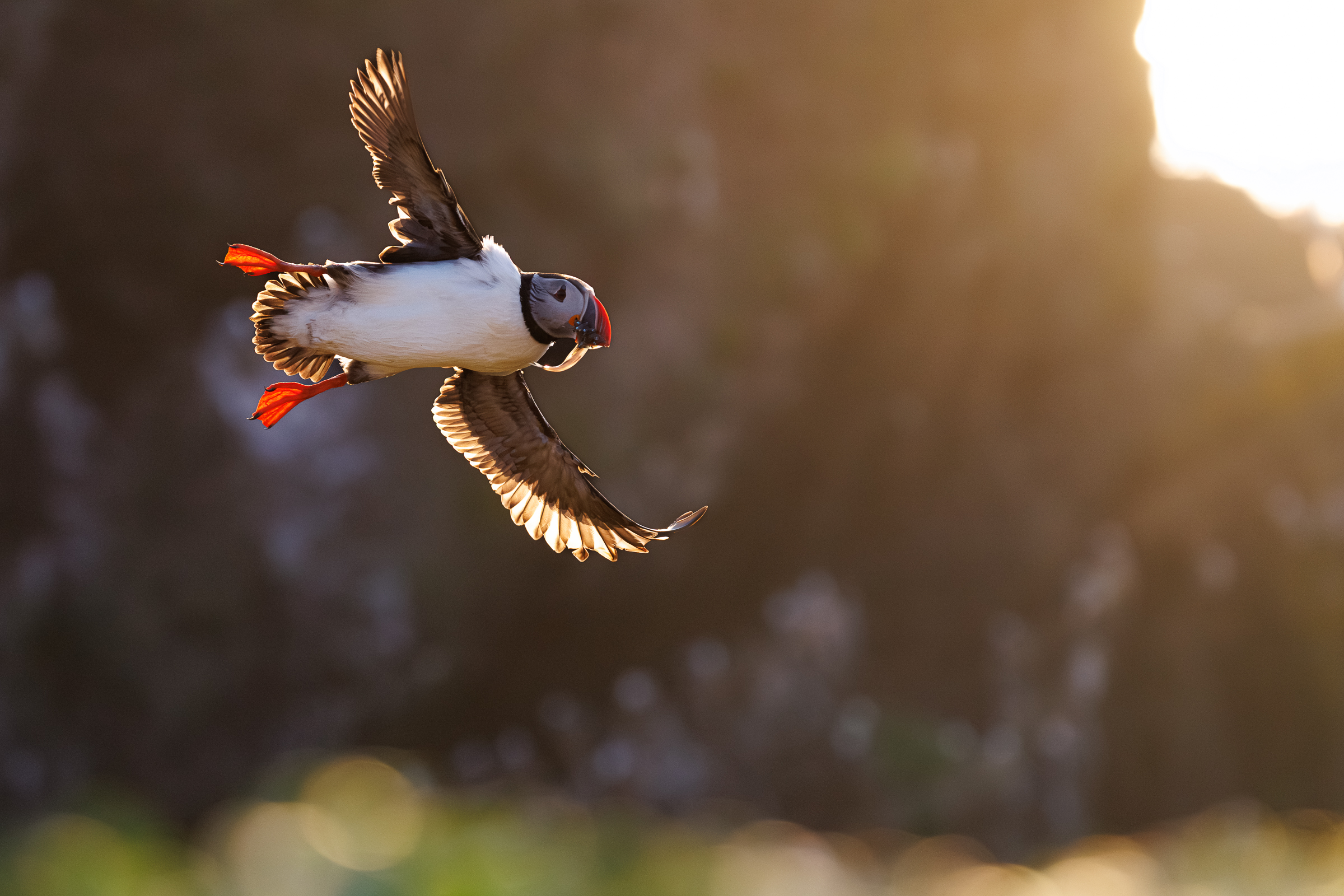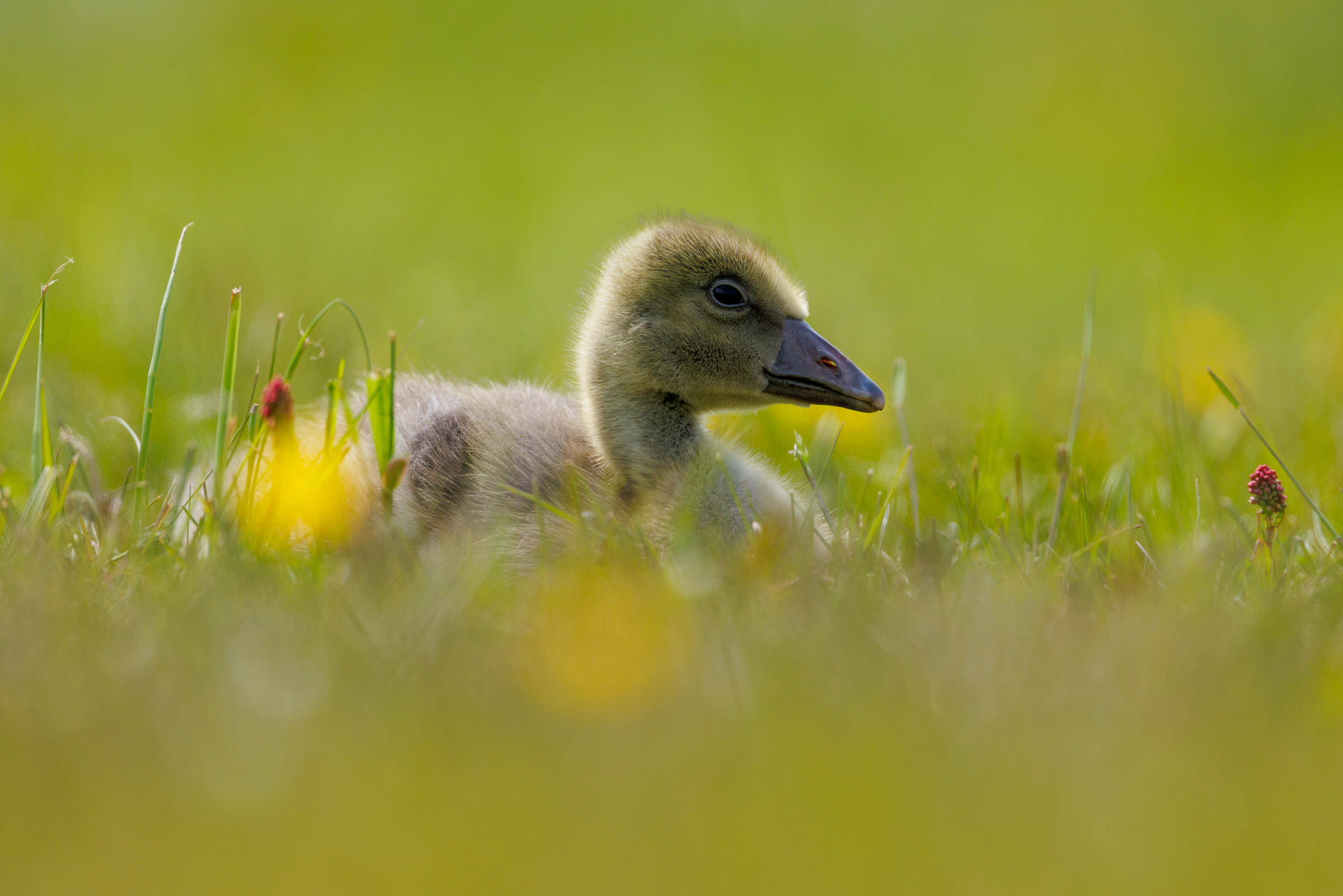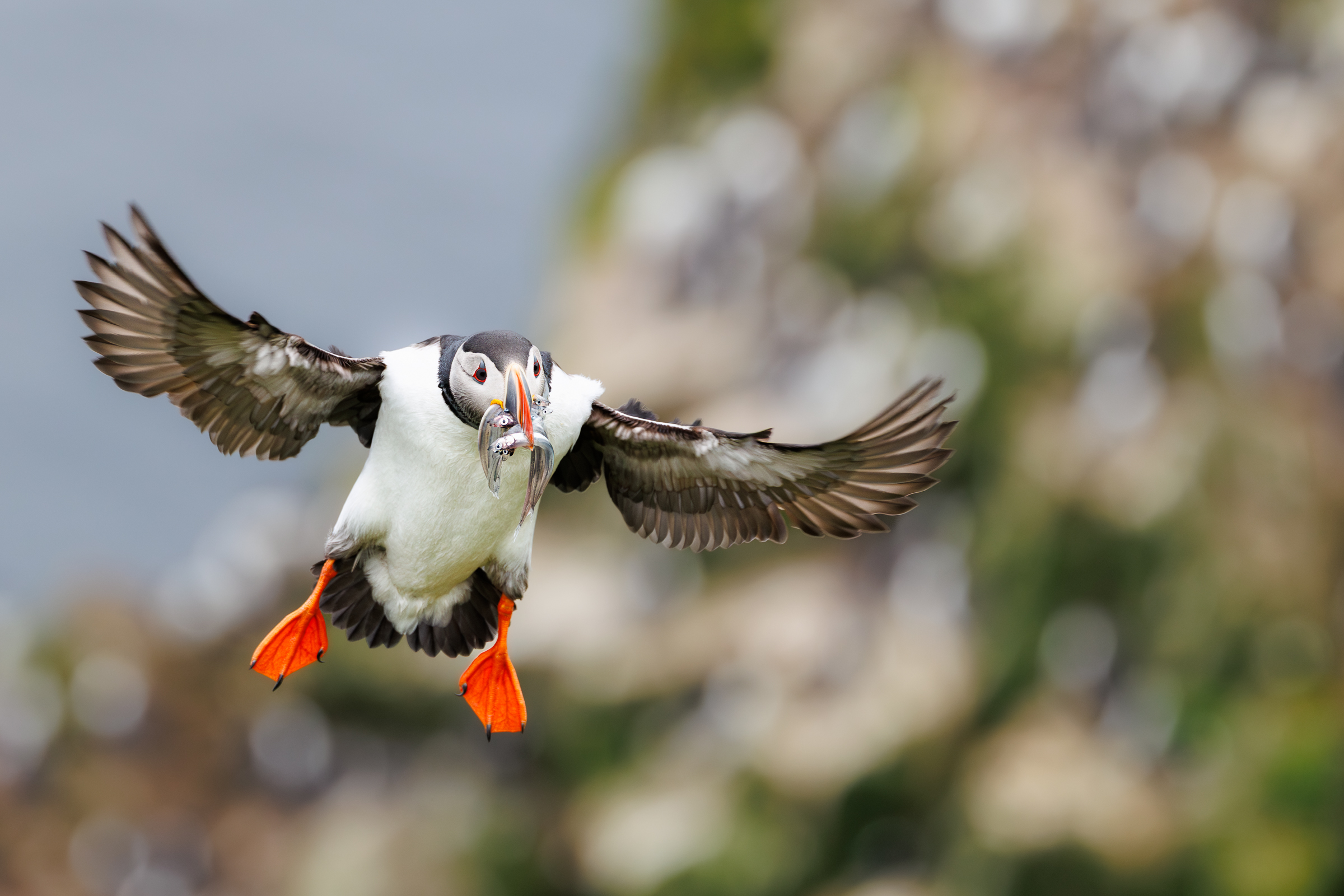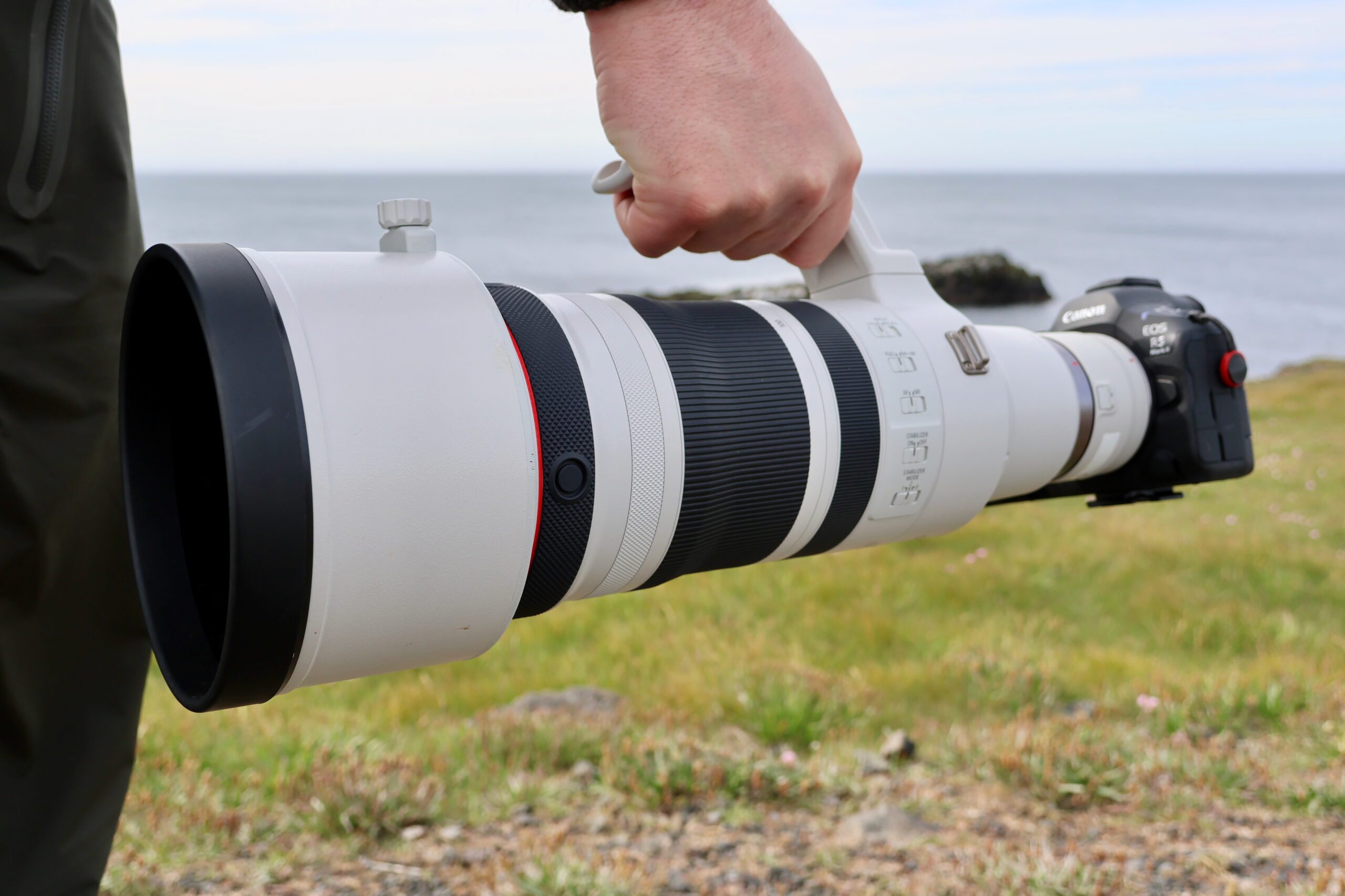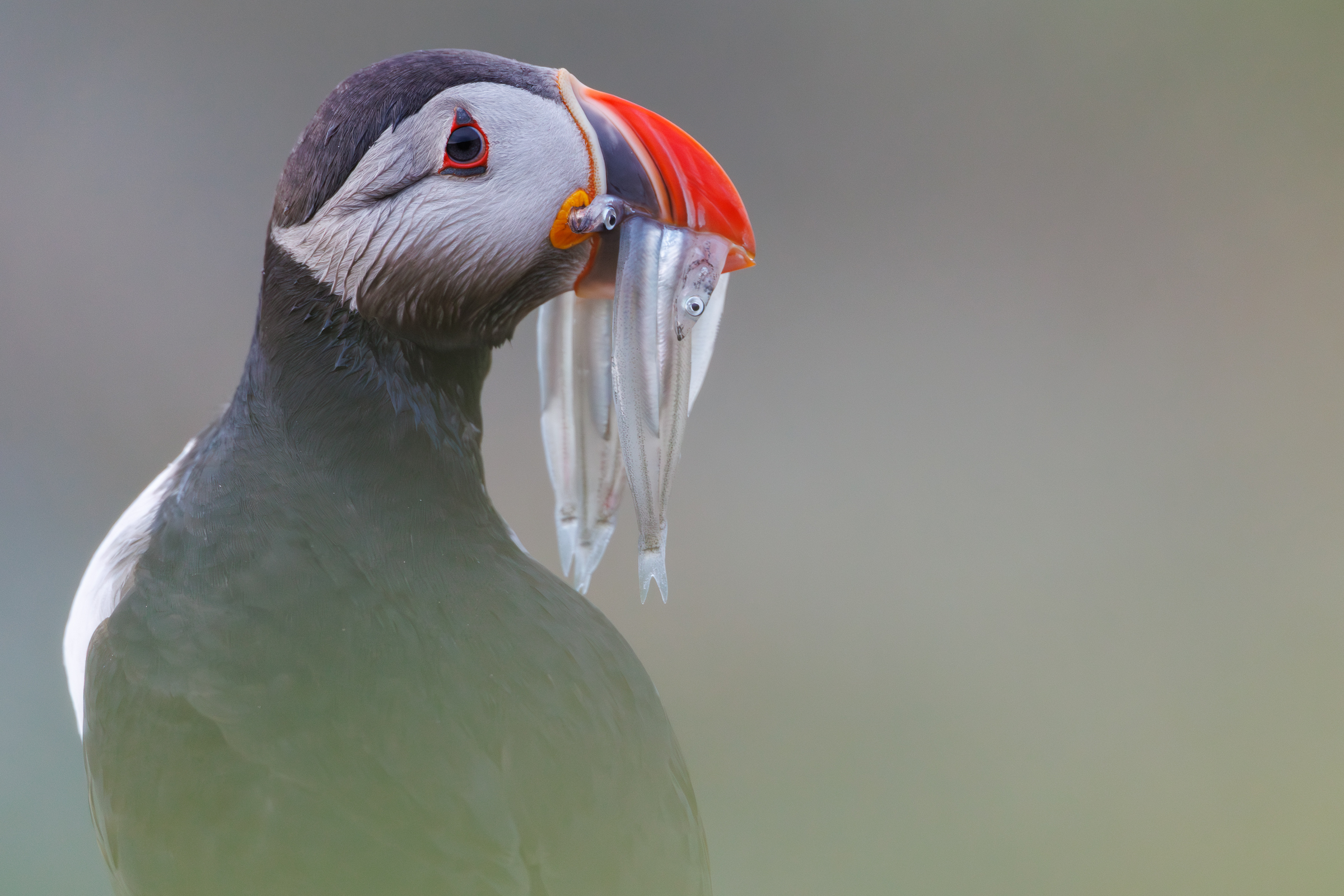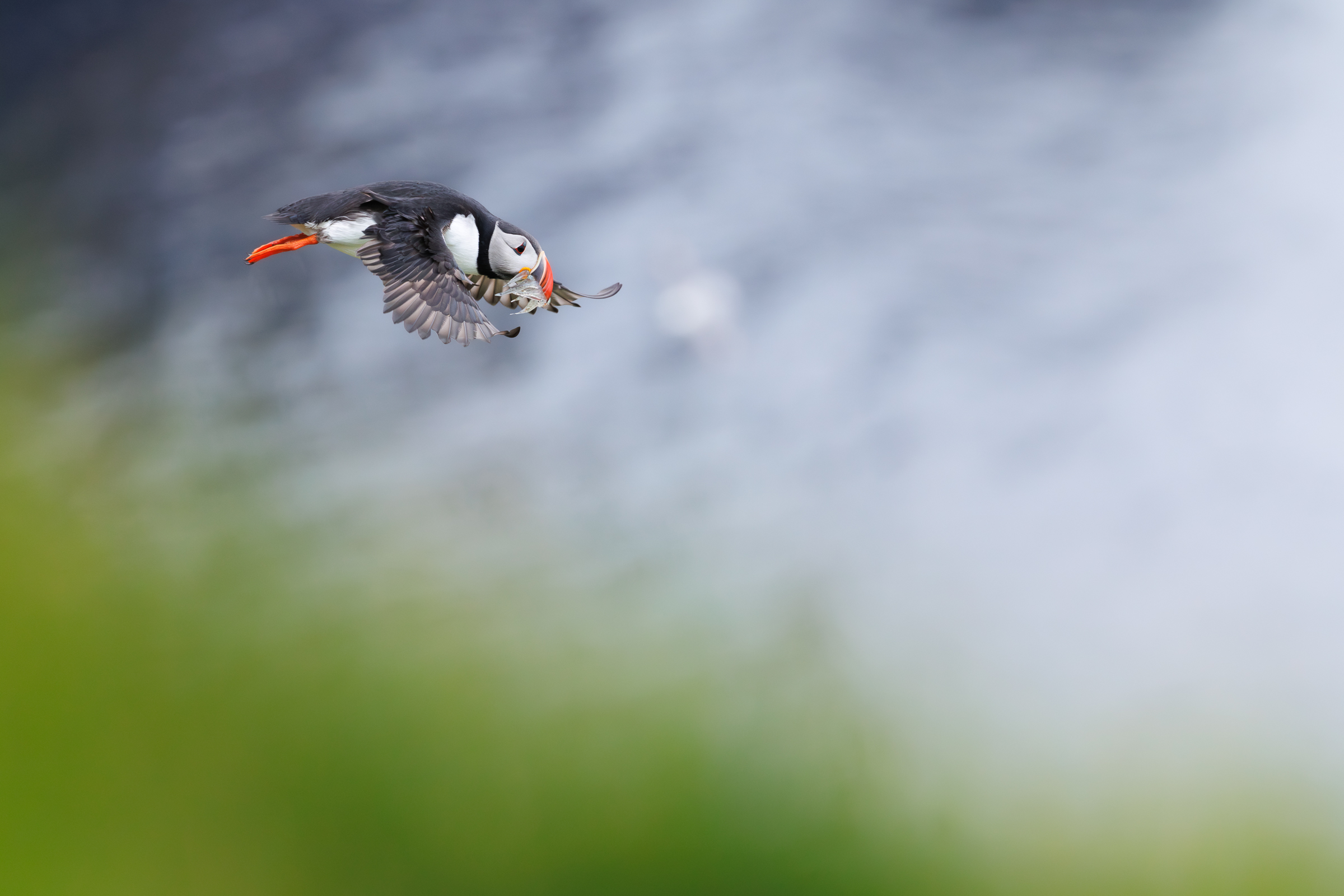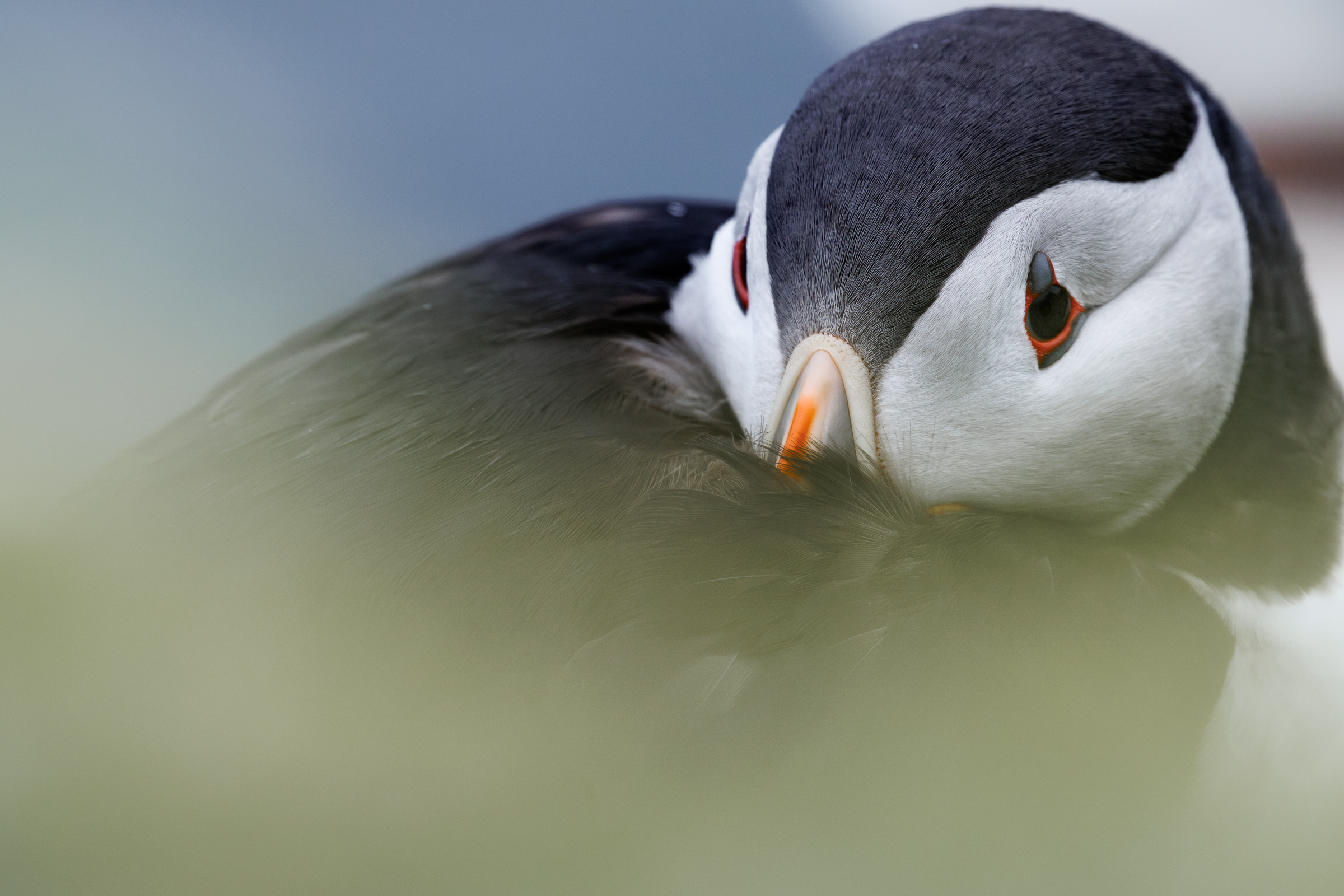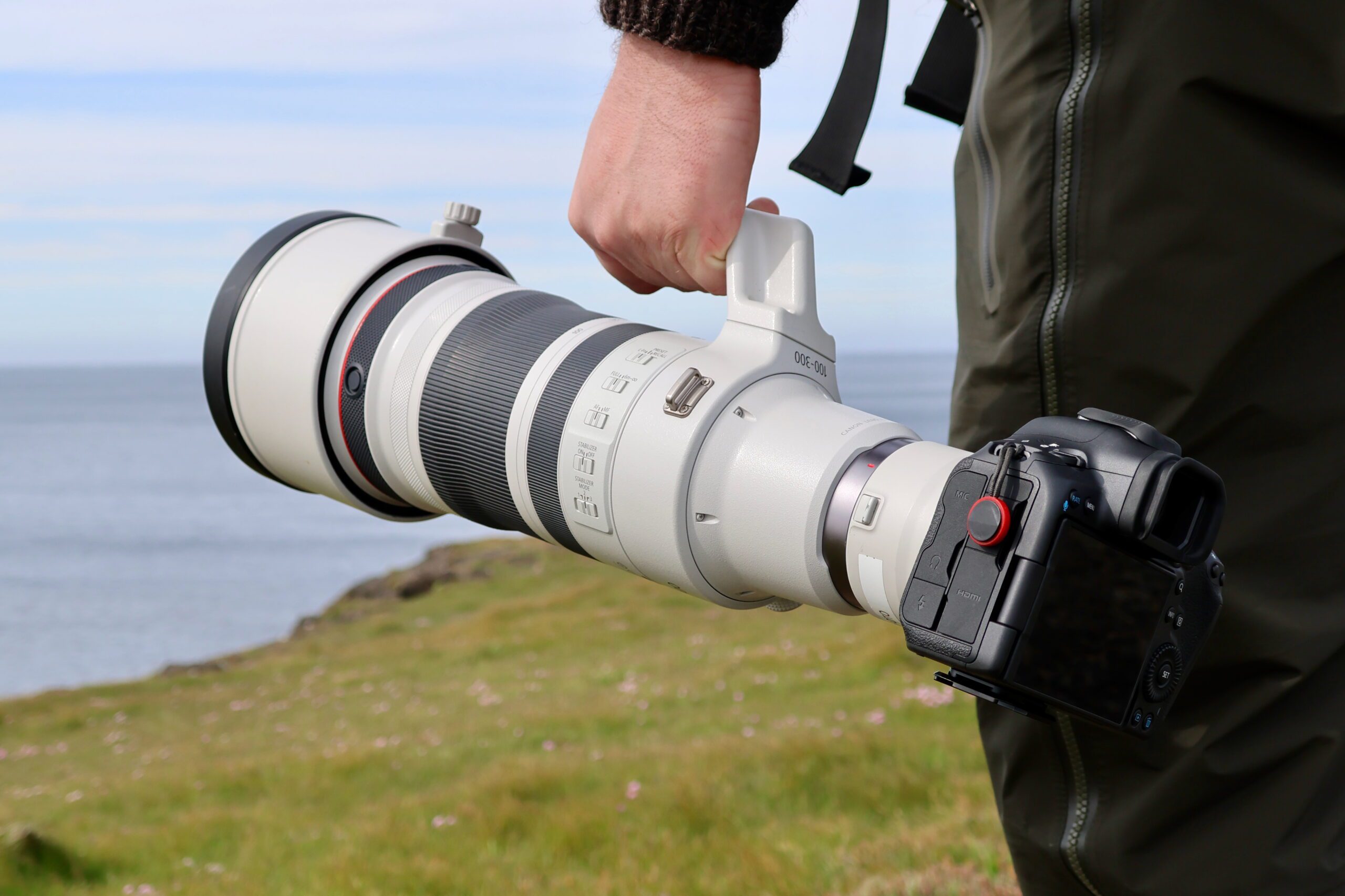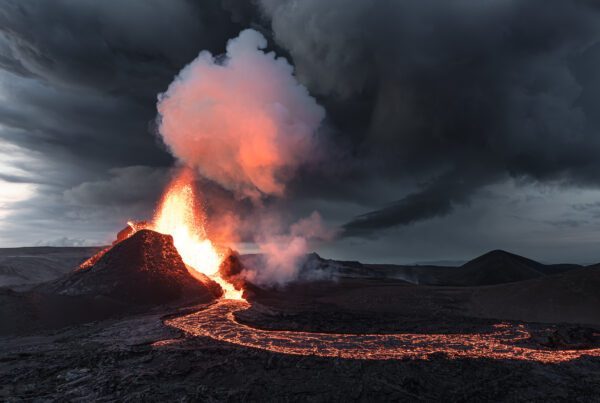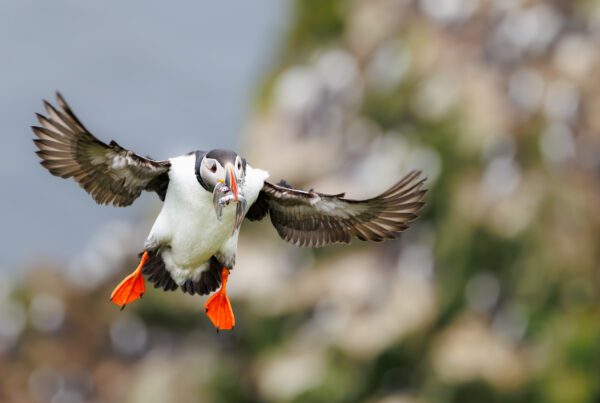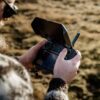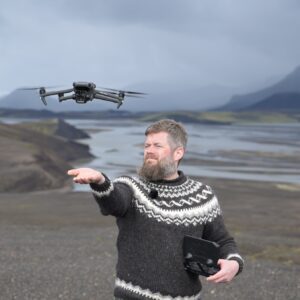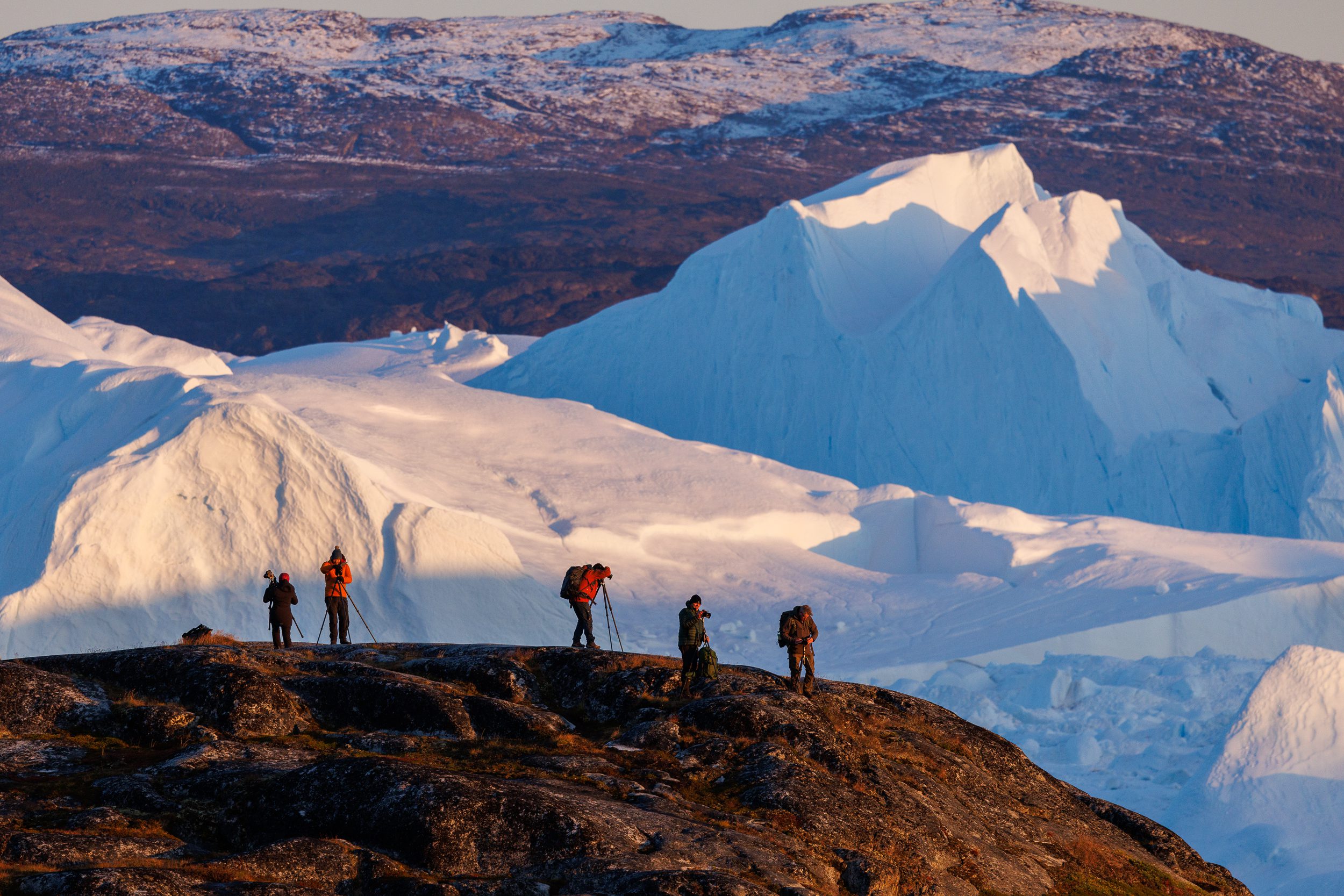In the middle of June, I hosted my annual Puffins in the Midnight Sun bird photography workshop on Grímsey in Iceland. Every year, I bring together a group of photographers who are eager to learn more about bird photography and are excited to improve their skills. This year, I decided to also test myself during this workshop by bringing a lens I was absolutely not familiar with: the Canon RF 100-300mm F2.8 L IS USM.
The Canon RF 100-300mm F2.8 L IS USM is an impressive piece of gear according to what I’ve read and heard about it so I really want to try it out myself. To form my own opinion about it, I wanted to use it in the best situation I could think of: photographing puffins. I purposely left my favourite lens for the job, the Canon RF 100-500mm at home, so I wouldn’t have an easy way out if things didn’t work out as planned.
As always, in my lens and camera reviews I don’t obsess about the technical specifications but I rather focus on capturing images I want to capture. I focus on how it performs in-the-field and whether or not it allowed me to do things I would otherwise not be able to do. Do not expect me to be comparing images at 400% crop to check sharpness as I do not believe that’s important at all.
So how did the Canon RF 100-300mm F2.8 L IS USM, this magical unicorn of a lens, stack up in a real world scenario for a hybrid photographer like myself? Let’s find out!
Interested in joining the 2026 edition of Puffins in the Midnight Sun? It is now possible to sign up via the Puffins in the Midnight Sun 2026 photo workshop page.
Full disclosure: This is not a sponsored review. I borrowed the Canon RF 100-300mm F2.8 for a week from Ofar/Canon Iceland and used it during my Puffins in the Midnight Sun photo workshop. I am not being paid to write this review nor did anyone get any input or preview. All opinions are my own.
Using The Canon RF 100-300mm F2.8 L IS USM In Real World Bird Photography Scenarios
For someone who usually shoots with the Canon RF 100-500mm telephoto lens, changing over to the Canon RF 100-300mm F2.8 L IS USM was a big adjustment in many ways. I had never used such a big & heavy lens with such a wide aperture before.
For the purpose of this review, I tested the Canon RF 100-300mm F2.8 L IS USM together with the Canon EOS R5 Mark II (the latest addition to my kit) and in combination with the 1.4x and 2x RF extenders. I divided the review in a few key aspects that are very important in my line of work.
Build Quality
Let’s start with the most eye-catching thing about the Canon RF 100-300mm: its build quality. As soon as you hold it you notice three things: it’s heavy, it’s big and it’s well-built. With a whopping 2585,5 gram (without a camera body), this is possibly the heaviest lens I have ever used. While it’s something you notice right away, you kind of stop noticing it after a while. I definitely got used to the weight. That is until I started waving it around photographing birds-in-flight. I love shooting handheld when photographing flying puffins and it was certainly a workout with this lens.
The Canon RF 100-300mm F2.8 L IS USM is also considerably larger than any other lens I have used. The front element is almost 12 centimeters in diameter and the lens barrel itself is almost 35 centimeters long – without the included lens hood. The included lens hood adds another 10 centimeters to that.
However, while it is a massive piece of kit to carry around, the Canon RF 100-300mm F2.8 L IS USM is also one of the best built lenses I have ever used. It feels incredibly sturdy and premium. One of my favourite parts is the tripod collar, which doubles as a carrying handle. The way this handle has been finished, with a nice curved rubber grip on it, is clearly well thought out.
Image Stabilisation
The Canon RF 100-300mm F2.8 L IS USM has excellent image stabilization and you know how I know that? Because I didn’t notice it at all. Even though I was unintentionally shaking whilst holding this heavy lens, I never noticed I was shaking because the lens stabilized really, really well. Of course, depending on what camera body you use, your mileage may vary. All I can say is that it worked great with the Canon EOS R5 Mark II.
Image Sharpness
Just like with my Canon RF 100-500mm, the image sharpness of this lens is of course very important to me. It’s safe to say that the Canon RF 100-300mm has absolutely no issues in that regard and the image sharpness is excellent, which you would expect from such an expensive lens. I tested this lens at all kinds of apertures, ranging from F2.8 to F16 and I never felt like any of the images fell short. As mentioned before, I won’t delve into pixel-peeping comparisons but the images below definitely speak volumes.
Autofocus
The Dual Nano USM autofocus motors on the Canon RF 100-300mm work blazingly fast. At not point did I feel this lens was holding me back. Especially when combined with the Canon EOS R5 Mark II, it was almost as if I just had to point at the right bird and press the shutter. On top of that, it’s also very quiet when focusing. Even in the most intimate shooting circumstances, where I crawled really close to one puffin and I couldn’t make a sound, I didn’t even hear the lens focusing. It was THAT quiet!
Extenders
For reasons mentioned in the previous paragraph, I did use extenders in combination with the Canon RF 100-300mm F2.8 L IS USM a lot during this trip. One thing I really liked about using them with the Canon RF 100-300mm, in comparison to my Canon RF 100-500mm is that the Canon RF 100-300mm doesn’t have any issues with the lens barrel sticking out with an extender attached as the zoom is internal. The 1,4x extender, which I also borrowed for the photo workshop, has very sharp while the 2x extender produces slightly softer images. Did that matter in the end result? No, it did not. Truth be told, I didn’t even notice it until I accidentally zoomed in to 200%. I ended up using the 2x extender a lot as it gave me a nice 600mm of range to work with while still keeping a wide aperture at F5.6.
What Didn’t I Like About The Canon RF 100-300mm F2.8 L IS USM?
While there is a lot to love about the Canon RF 100-300mm F2.8 L IS USM, there are definitely a few shortcomings or downsides that I find worth considering. It’s good to note that these are downsides which relate to my workflow and my niche so they may not necessarily apply to you.
The first, and probably biggest, downside is the price of the Canon RF 100-300mm. Coming at over 10,000 USD, this lens is extremely expensive. Does that mean it is too expensive for what you get and for whom this is marketed for? No, I don’t think so. But it is still a big chunk of money from your budget for what ultimately may be incremental improvements over other telephoto lenses you may be considering.
A second potential downside is that the minimum focus distance of the Canon RF 100-300mm is 1.8 meters, which is considerably longer than on my Canon RF 100-500mm, I did feel I needed to reach for an extender very often. Sure, I could have cropped in a lot but then I lose too much of the resolution I desire to keep.
The Canon RF 100-300mm is a big & heavy lens which can become an issue if you have to carry it together with a lot of other photography equipment. I also found it to be quite challenging to use handheld, especially with birds-in-flight. You can, of course, use something like a gimbal head on a tripod but I find those very limiting in my workflow. I enjoy being mobile and flexible while shooting and a tripod feels limiting in that regard. Given the size of the Canon RF 100-300mm you may also need a much bigger backpack to carry it if you plan on bringing a lot of other photography gear.
Finally, I found the range of the Canon RF 100-300mm to be limiting compared to my Canon RF 100-500mm. Therefore I kept reaching for the extenders I carried as well, which then also limit you on the shorter end. Perhaps I have gotten so used to having that nice 100 to 500mm range that I am struggling to step down to something with a more limited range.
Having to use extenders all the time felt limiting and made me long for my Canon RF 100-500mm.
The size difference between my Canon RF 100-500mm and the Canon RF 100-300mm F2.8 L IS USM is tremendous and definitely felt limiting in terms of packing other gear.
Discover Jeroen’s Photo Workshops in Iceland, Greenland & Beyond
Ready to take your photography to the next level? Join me, Jeroen Van Nieuwenhove, on unforgettable photo workshops in Iceland, Greenland, Antarctica and other exciting destinations. Whether your passion is wildlife photography, bird photography, landscape adventures, or mastering drone photography, each workshop is designed to give you hands-on guidance in some of the world’s most spectacular locations.
From puffins in the midnight sun to Arctic foxes in the wild, from glaciers and volcanoes to dramatic coastlines seen by drone – these journeys are more than workshops; they’re once-in-a-lifetime experiences. Group sizes are kept small, ensuring personal mentoring and plenty of shooting opportunities.
Looking for something specific? Check out Jeroen’s…
- Wildlife & Bird Photography Workshops (Puffins, Arctic Foxes)
- Drone Photography Workshops
- Photo Workshops in Iceland
- Photo Workshops in Greenland
Spots are limited – secure your place today!
What Previous Participants Shared About Their Experience
These reviews are verifiable on Jeroen’s public Google Business profile.
Support Jeroen’s Work
As an independent photographer, Jeroen partially relies on your support to keep producing worthwhile content such as blogs, photographs, books and much more. If you want to support his work, it is possible to do so by buying his e-books & books, prints or calendars.
You can also sign up to the newsletter to stay up to date on new blog posts, projects, workshops and other interesting information.
Thank you for considering!

